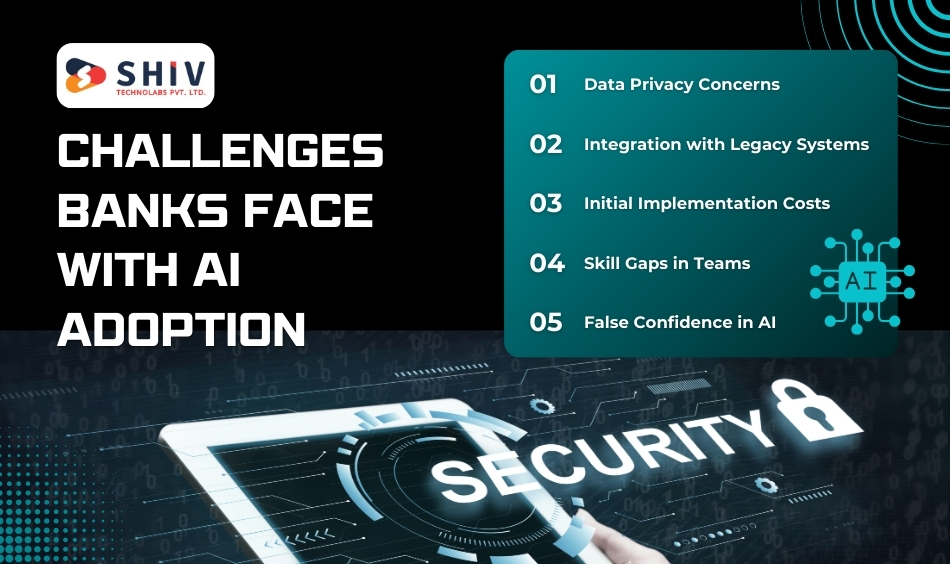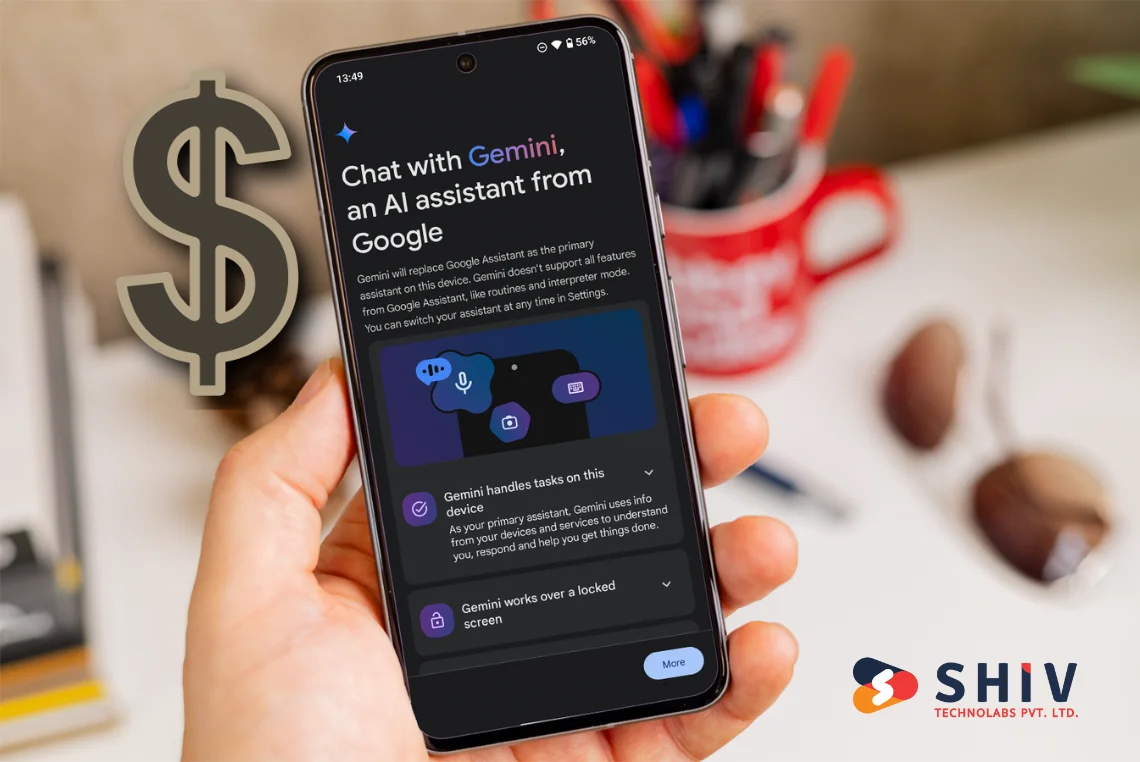Table of Contents
Banking has always carried a certain level of risk, but digital transactions have changed the scale of the challenge. Every transfer, card swipe, and online payment creates opportunities for fraudsters to trick systems.
From identity theft to fake accounts and money laundering, banks are constantly under pressure to protect their customers and reputation.
Traditional fraud detection relies heavily on static rules and manual checks. While useful, these methods often fall short against fast-changing fraud tactics.
False positives are another concern, where genuine customers get flagged by mistake, creating frustration and lost trust.
In this blog, we will see how AI is transforming fraud detection in banking, the methods it uses, the benefits it brings, the challenges banks face in adopting it, and what the future looks like.
Why Fraud Detection Matters for Banks?
Fraud in banking is more than stolen money. It shakes customer confidence, slows operations, and brings regulatory penalties. Once trust is gone, recovery is difficult.
Some hard facts:
- By 2030, fraud costs for banks and payment providers globally may reach $58.3 billion (Source: Juniper Research).
- Each fraud case brings hidden costs—investigations, chargebacks, and lost customer loyalty.
- Regulatory fines add extra financial pressure.
Traditional methods fall short because:
- Static rules are easy for criminals to bypass.
- Manual reviews cannot keep up with transaction volumes.
- Genuine customers often get flagged, leading to frustration.
AI changes this picture. Instead of following rigid rules, it learns patterns, detects unusual behavior instantly, and reduces false alarms. For banks, it means protecting both money and relationships.
How AI Detects Fraud in Banking?

Imagine this: a customer logs in from New York and, just minutes later, another login attempt comes from Singapore using the same account. Traditional systems might miss this or flag it too late. AI, however, spots the anomaly instantly and freezes the account before any damage occurs.
Here’s how AI does it:
- Real-Time Transaction Monitoring: Every transaction runs through AI models that compare current activity with past behavior. If someone suddenly makes multiple high-value transfers abroad, the system raises an alert before money leaves the account.
- Behavioral Pattern Analysis: AI learns how each customer behaves—how often they log in, the devices they use, and their usual spending style. When behavior changes suddenly, such as shopping in a different country within hours, AI treats it as suspicious.
- Predictive Risk Scoring: Machine learning assigns a risk score to each transaction. A low score means safe, while a high score signals a possible fraud attempt. This scoring helps banks act before fraud occurs, not after.
- Biometric Security: Fingerprints, voice recognition, and facial scans are becoming common in banking apps. AI ensures these checks are accurate and hard to bypass. If something doesn’t match, access is denied.
- Anti-Money Laundering (AML) Tracking: AI tracks unusual transfers, layered transactions, and shell accounts. By doing so, AML software supports banks in meeting AML compliance and identifying criminal networks.
AI doesn’t just block fraud—it learns from each case, making the system smarter with time.
Key Benefits of AI Fraud Detection in Banking
AI fraud detection is not just about catching criminals—it’s about making banking safer, faster, and more reliable. To understand its impact, let’s compare it with traditional methods:
| Factor | Traditional Approach | AI-Powered Approach |
|---|---|---|
| Speed | Suspicious activity was flagged hours or days later | Transactions checked instantly, alerts raised in real time |
| Accuracy | High number of false alarms | Reduced false positives, more precise fraud detection |
| Scalability | Limited by staff and manual checks | Can scan millions of records at once without delay |
| Cost | Large teams are needed for monitoring and review | Cuts down manual effort and reduces operational expenses |
| Adaptability | Hard to update rule-based systems | Continuously learns from new fraud patterns and adapts |
# Why It Matters for Banks?
- Faster detection means fewer financial losses.
- Lower false positives improve customer experience.
- Reduced manual reviews to free staff for higher-value tasks.
- Smarter systems strengthen compliance with regulations.
AI-driven fraud detection creates a balance: it protects banks from risk while keeping customer interactions smooth and trustworthy.
Real-World Examples of AI in Banking Fraud Detection
1. HSBC – Smarter Transaction Monitoring
HSBC introduced AI systems to track millions of transactions daily. Instead of relying only on rule-based alerts, the bank uses machine learning to analyze customer behavior. The result: fewer false positives and faster detection of unusual activity.
2. Mastercard – Stopping Fraud Before It Happens
Mastercard applies AI algorithms that scan global transactions in real time. The system compares each payment against billions of past data points. Suspicious activity is blocked within seconds, protecting both merchants and customers.
3. US Bank – Biometric Security
US Bank has adopted voice biometrics to strengthen customer verification. Instead of asking long security questions, the system matches voice patterns within seconds. This not only prevents impersonation but also makes customer service faster.
4. PayPal – Fighting Account Takeovers
PayPal relies heavily on AI to detect account takeovers. The system examines device data, login habits, and transaction types. Any unusual sign triggers a verification step, reducing fraudulent withdrawals and chargebacks.
These examples show how leading financial institutions are applying AI in different ways—whether it’s analyzing large volumes of transactions, improving identity checks, or preventing account misuse.
Challenges Banks Face with AI Adoption

AI brings powerful tools for fraud detection, but banks often face hurdles when trying to adopt these systems. Here are some of the most common challenges—along with practical ways to address them:
1. Data Privacy Concerns
- Problem: Banks handle highly sensitive information. Sharing or analyzing this data through AI systems raises concerns about privacy and misuse.
- Solution: Strong encryption, role-based access, and compliance with regulations such as GDPR can keep data secure while still allowing AI to function effectively.
2. Integration with Legacy Systems
- Problem: Many banks still run on decades-old technology that doesn’t easily connect with modern AI tools.
- Solution: A phased integration approach works best. Banks can start by introducing AI to specific areas, such as transaction monitoring, before expanding to the entire system.
3. Initial Implementation Costs
- Problem: Building AI models and training staff requires significant investment. Smaller banks often hesitate due to budget limits.
- Solution: Cloud-based AI solutions and partnerships with trusted tech providers can lower upfront expenses and spread costs over time.
4. Skill Gaps in Teams
- Problem: Many banking professionals are unfamiliar with AI technology, leading to resistance or errors in adoption.
- Solution: Regular training, workshops, and collaboration with AI experts help teams adapt and make the most of the new systems.
5. False Confidence in AI
- Problem: Relying completely on AI can be risky. Fraudsters continue to find new ways to bypass systems.
- Solution: AI should work alongside human experts. Combining machine insights with human judgment leads to stronger fraud prevention.
By addressing these challenges carefully, banks can move from hesitation to confident adoption, gaining the full benefits of AI fraud detection.
The Future of AI in Banking Fraud Detection
AI in banking fraud detection is still growing, and the next few years will bring even more advanced applications. Instead of only reacting to fraud, systems will become predictive, stopping fraud attempts before they even begin.
Here are some key trends shaping the future:
1. Predictive Analytics at Scale
AI will not just look at current transactions but also forecast risks based on customer history, network patterns, and global fraud activity. This will allow banks to intervene before fraud happens.
2. Federated Learning Models
Sharing data between banks is often restricted by privacy laws. Federated learning solves this by allowing AI models to learn from shared insights without exposing raw customer data. This will help banks fight fraud collectively without breaking compliance rules.
3. Stronger Biometric Security
Biometrics will expand beyond fingerprints and face scans. Behavioral biometrics—like typing speed, swipe patterns, and device usage—will play a big role in identity verification.
4. Integration with Blockchain
Blockchain’s transparency and immutability make it a powerful ally for fraud prevention. Combined with AI, it can trace suspicious activities across multiple financial systems more effectively.
5. Quantum-Ready Security
With quantum computing on the horizon, AI-driven fraud systems will need to prepare for new levels of encryption and data protection.
The future will not be about banks choosing whether to adopt AI. It will be about how quickly and effectively they can make it part of their fraud prevention strategy.
Start Your AI Fraud Detection Journey with Shiv Technolabs
At Shiv Technolabs, we help banks and financial institutions build AI-powered fraud detection systems tailored to their needs.
Our fintech software development services are designed to:
- Detect suspicious activity instantly with machine learning models
- Lower false positives and improve detection accuracy
- Strengthen compliance with AML and KYC requirements
- Deliver secure and reliable digital banking experiences
With a proven track record in custom banking software development, Shiv Technolabs can support you from planning to full-scale implementation.
Conclusion
Fraud detection in banking has moved far beyond simple rule-based checks. Criminals adapt quickly, making it difficult for traditional systems to keep up.
Artificial Intelligence provides the tools to fight back—analyzing huge amounts of data in real time, spotting unusual activity, and predicting risks before they grow into real problems.
With AI, banks can reduce financial losses, protect customer trust, and meet strict regulatory demands more effectively. The future of fraud prevention lies in systems that are smart, adaptive, and able to work alongside human experts.
Connect with our team today and take the first step toward safer digital banking.























